New perk! Get after it with local recommendations just for you. Discover nearby events, routes out your door, and hidden gems when you sign up for the Local Running Drop.
No matter what you call it—middle distance, long course, half-iron, 70.3 or half Ironman—finishing a 70.3-mile triathlon is one impressive feat. In recent years, the half-Iron has become one of the most popular events in triathlon, as athletes discover the 70.3-mile race allows them to get a taste of full Ironman racing without the time and energy commitment of a full Ironman. Most athletes can train for a 70.3 without giving up entire weekends for long workouts and recovery—a stark difference from its full-iron counterpart.
But how do you train for a half Ironman? After all, one doesn’t simply wake up and decide they want to race a 70.3. It takes time, dedication, and a solid 70.3 training plan. We’ll be with you every step of the way, using this guide containing everything you need to know about training for a half-Iron triathlon.
Section divider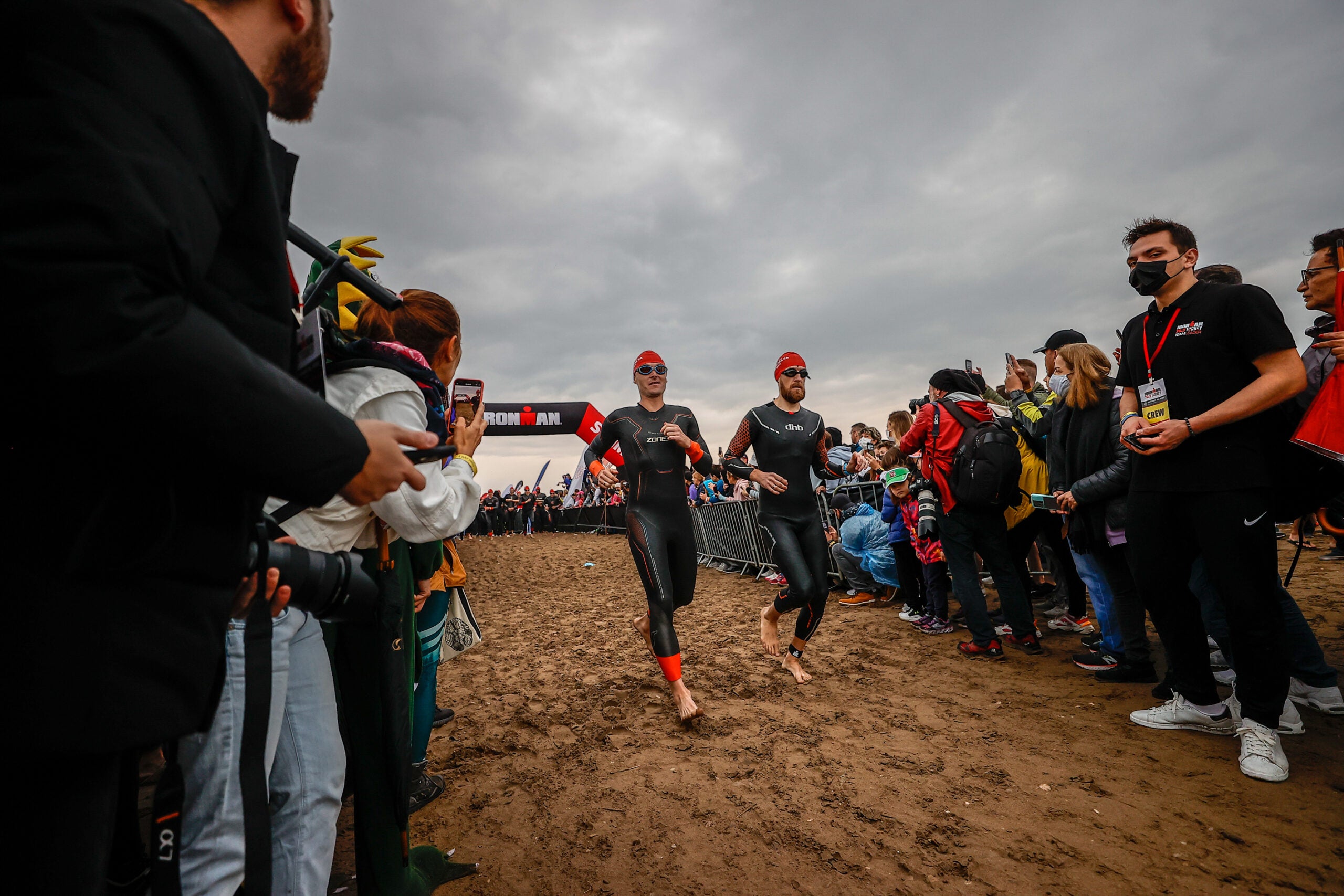
What is a half-iron triathlon?
The name “half-iron” comes from the standardized distances in triathlon. An “Iron-distance” triathlon, also known as a full Ironman, is 140.6 miles in length—this was the length of the original Ironman Hawaii, first held in 1978. As the name implies, a half-iron is half the distance of the full, or 70.3 miles. This is broken down into swim, bike, and run legs within the race:
| Half Iron Triathlon Distances | |
| Swim | 1.93K (1.2 miles) |
| Bike | 90K (56 miles) |
| Run | 21K (13.1 miles) |
Are 70.3 and half-iron the same thing?
When searching for a half Ironman near you, it’s common to discover that these races have a lot of different names, despite being the same mileage. Some races call themselves “middle distance” while others use “half-iron” or “70.3.” These are all the same race distance, and the name usually comes down to branding. “Ironman” is a trademarked name for races owned by the Ironman brand; they have also trademarked “Ironman 70.3.” Many people use 70.3 as shorthand for all races, in much the same way they use Kleenex for all facial tissue or Band-Aid for all adhesive bandages.
USA Triathlon, the governing body for the sport in the United States, refers to this distance as “long course” and offers a national championship in the event every year. Ironman and Challenge Family also put on world championships for the 70.3 and middle distance triathlon, respectively. They’re all half-iron races, just different branding. Below, we’ll talk about how to choose the best half-iron distance race for you.
Section divider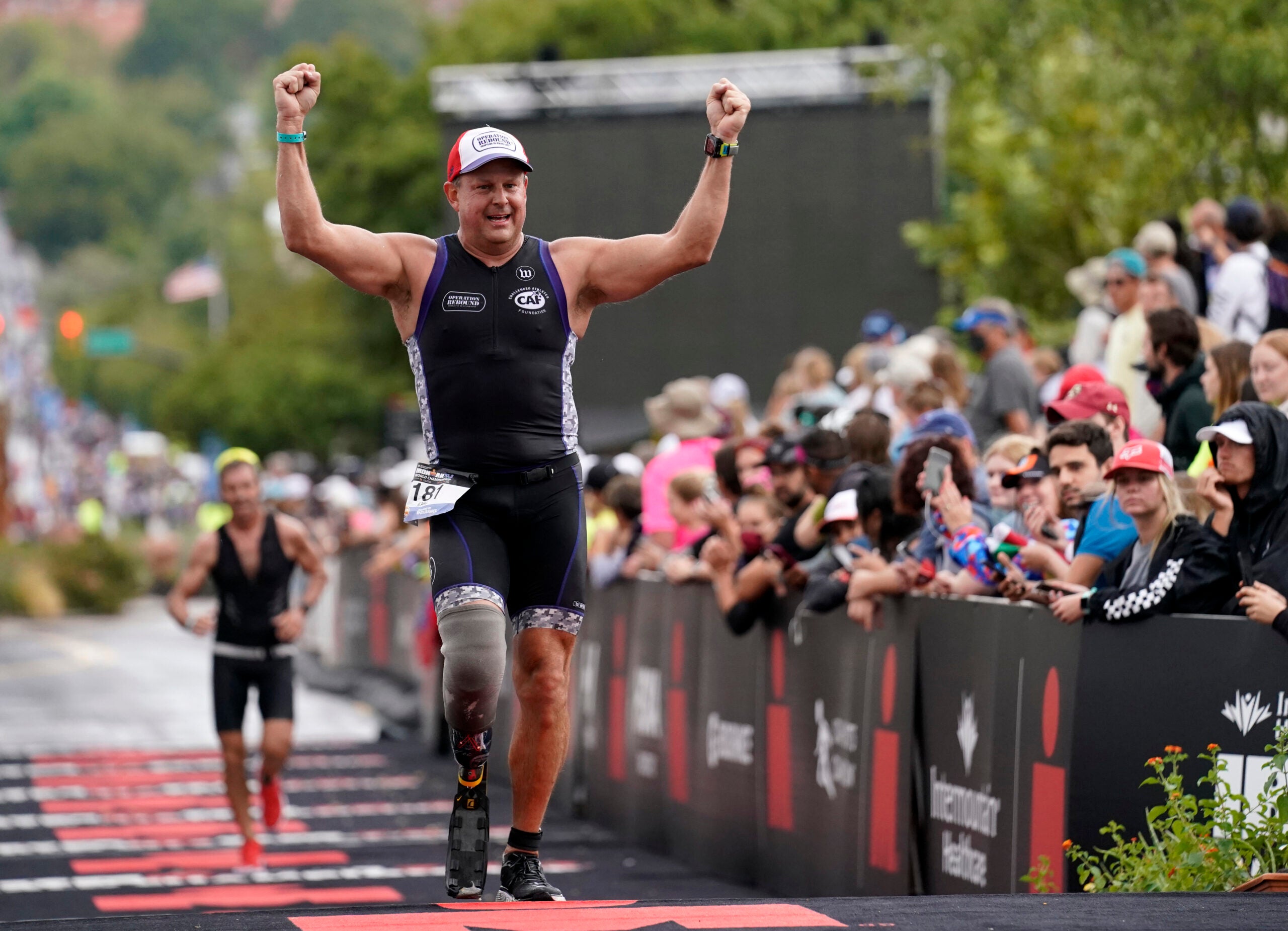
What’s the average half-iron finishing time?
The average 70.3 finishing time for age-group triathletes is 5:51 for men and 6:18 for women.
Most triathletes finish a half-iron or 70.3 triathlon between 5 and 8 hours. That’s a wide range, and accounts for several different factors:
- The athlete’s age
- The athlete’s fitness level
- How challenging the course is
- Environmental factors (wind, heat, etc.)
- Nutrition and hydration
For your first 70.3, it’s not typically recommended to set a time goal—instead, most coaches advise first-time athletes to focus on simply finishing. After the first event, you can fine-tune your racing strategy to hit specific time goals on the swim, bike, and run. However, if you are looking to get a gauge of how long it will take you to finish a half-iron triathlon, Coach John Newsom recommends using the following general guidelines:
| Swim | 5–8 seconds per 100 slower than your 400 time |
| Bike | 85% of functional threshold power (FTP) or maximum heart rate |
| Run | 8–10% to your fresh half-marathon time |
RELATED: How to Set Triathlon Training Zones
Section divider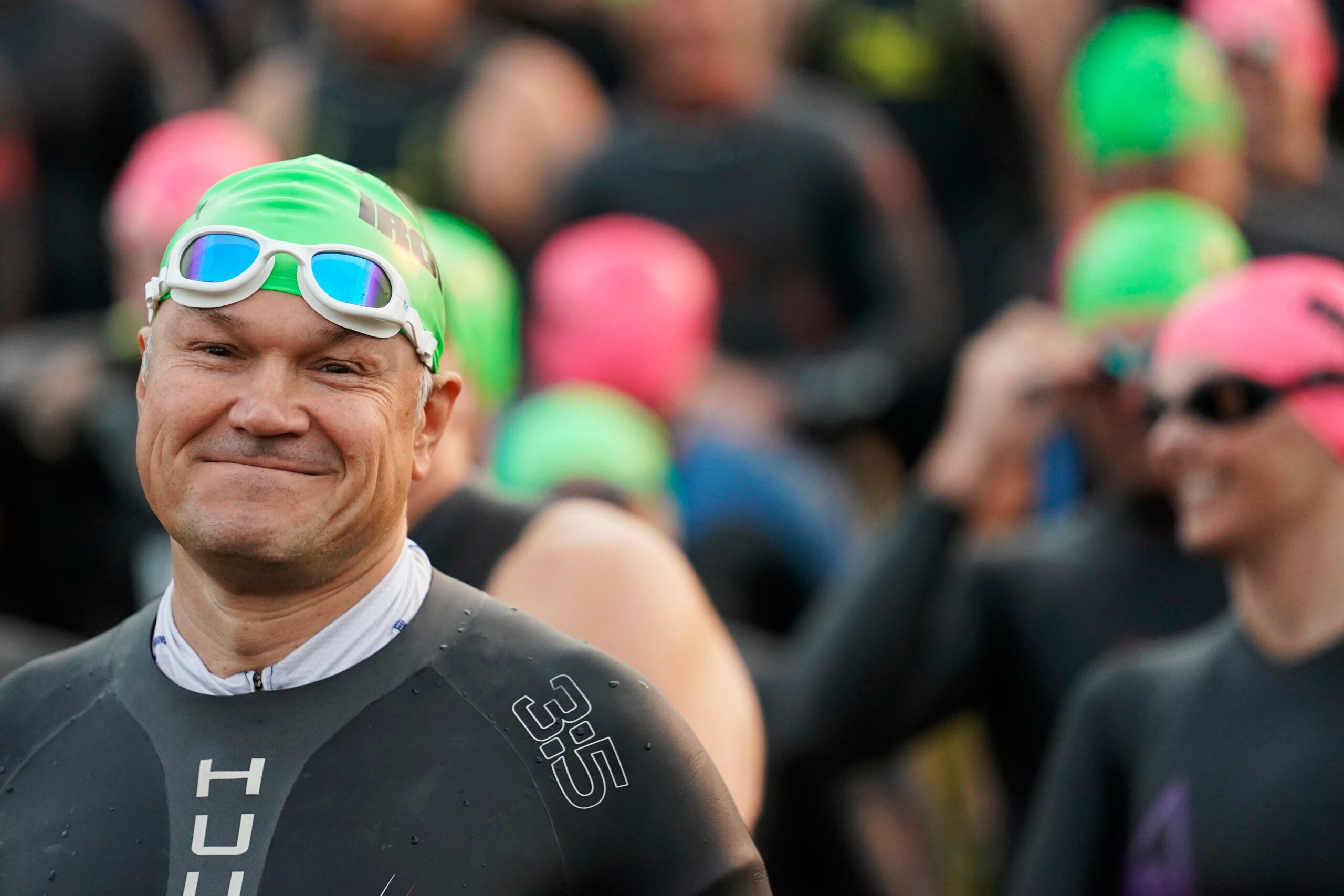
Can I do a 70.3?
Who can do a half-iron triathlon? Just about anyone who is willing to train for it! Even those who have never done a triathlon or endurance race before have found that it’s possible to finish a half-iron race with the right training.
However, that doesn’t mean the distance is for everyone. Before signing up for a race, it’s important to take stock of a few things:
- Why do you want to do this race?
- Do you have the time to train for it?
- What is your current fitness level?
- Do you know how to swim, bike, and run?
- Do you have any current or past injuries that may affect your ability to train?
That’s not to say any of the above factors will automatically disqualify you from taking on the challenge. It just means you need to realistically evaluate whether training for a 70.3 fits into your current lifestyle and how to do it in a way that will keep you happy and healthy. For example, if you’re new to triathlon or prone to injury when exercising, it’s a good idea to spend some time strengthening your body and gradually building your endurance so that you can handle long workouts and an even longer race.
RELATED: Strength Training for Triathletes
The biggest concern for many new triathletes is learning how to swim in your triathlon event. This is an area where preparation becomes even more important! Mastering the fundamentals of swimming will help you to become a more comfortable and confident swimmer; it will also help to prevent injury. Many new triathletes begin with swim lessons and a dedicated block of swim-focused training prior to embarking on a half-iron training plan. This allows for the development of both physical fitness and technical skills to complete the 1.2-mile swim.
RELATED: Our Complete Guide to Triathlon Swimming
Section divider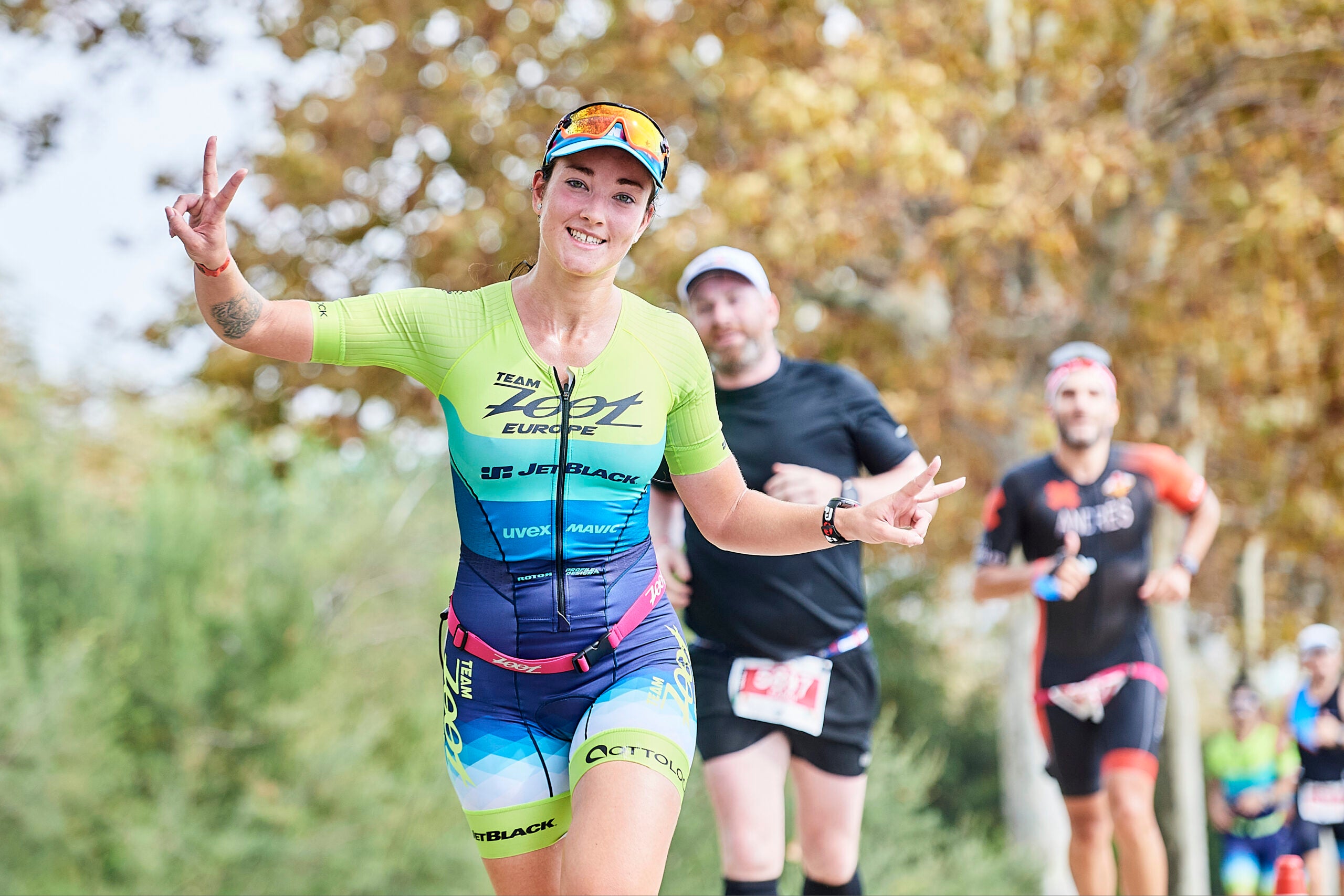
How much time does it take to train for a 70.3?
The longer the race, the more time an athlete needs to spend training for it. Though training for a half-iron is not nearly as time-intensive as training for a full Ironman, there is still a significant time commitment. Training for a half-Iron triathlon takes approximately 8 to 13 hours per week.
Most 70.3 training plans require at least 10 weeks of preparation; some recommend at least 20 weeks to thoroughly prepare. If you already have a solid foundation of knowledge, skills, and fitness in all three sports, a 10-week training plan can get you to the start line of your first 70.3. What does a “solid foundation” look like? Typically, this means you’re comfortable swimming for at least an hour, riding your bike three times a week (with a long ride of approximately 20 miles) and running three times per week (with a long run of approximately five miles). If you’re not quite there yet, choose a training plan that will allow you more time to build your fitness and endurance.
One of the biggest challenges of training for a half-iron triathlon is fitting in training alongside work, family, and social commitments. For some, it can be a challenge to find an hour during the work day for a swim or three hours for a long ride on the weekend. Some athletes try to create more time in their schedule by foregoing an hour or two of sleep each day, overlooking the fact that recovery time—and sleep—is one of the most important elements of triathlon training. Sleep is a critical part of adaptation, allowing the body to absorb and recover from the work you did in the days and weeks prior. As many coaches like to say, it’s not just how well you train that will determine your fitness, but also how well you recover.
So how do you find the time to train for a half-iron triathlon? We recommend reading Dr. Cory Nyamora’s tips on finding balance for triathletes. This resource from coach Matt Dixon is also an excellent guide to optimizing your time in order to optimize your performance.
Section dividerDo I need a coach to train for a 70.3?
Many people wonder if hiring a triathlon coach for a half-iron triathlon is a worthwhile investment. Unlike training for a half marathon, which is fairly straightforward, training for a 70.3 has a lot of moving parts, and a coach can help to bring some organization to the process. A triathlon coach can write a training plan that is unique to you, whether that means providing swim lessons at the beginning of your 70.3 journey or creating a training plan that is adjusted to your shift work schedule or upcoming business travel, when you may not have access to a pool. If you are looking for one-on-one instruction, a personalized approach to training, or accountability, a coach may be exactly what you need to prepare for your half-iron triathlon.
RELATED: How to Find the Right Triathlon Coach For You
But a coach is not required in order to successfully train for a 70.3. In fact, many athletes opt to follow a free half-iron training plan, which provides a schedule of daily workouts leading up to the race. They may also choose to pay for a 70.3 training plan with greater detail about the workouts as well as nutrition, recovery, gear, and preparation. Athletes who are highly motivated and able to follow basic instructions find they can navigate these training plans with great success.
Section dividerHalf-iron/70.3 training plans
It is always a good idea to follow a structured training plan that has been designed by a coach with many years of experience. Well-structured half Ironman training plans will factor in periodization, which is the term given to the many phases of training in any given year. Typically, these are structured as follows:
| Half Iron Training Phases | |
| Base | Usually the winter months, this time is spent doing mostly aerobic endurance training to help develop a fitness base. As they say: “the bigger your base, the faster the race!” Think of this time as laying the foundations for the season ahead. |
| Build | This is typically six to eight weeks before the race (depending on the athlete and their experience). Training will start to include more higher-intensity work and race-pace efforts. You should also start working in some brick sessions here (swim to bike and/or bike to run). |
| Race | Race-specific work, including race pace work, open-water swimming, practicing nutrition and transition rehearsal. |
| Taper | Two to three weeks of planned, progressive cutbacks in training volume to allow the body to prepare for the intensity of race day. |
RELATED: Triathlete’s Expert Guide on How to Taper
As already outlined above, be sure to choose a plan that suits your time commitments, and make sure it’s well balanced. If you are a weaker swimmer but an experienced runner, don’t shy away from spending more time in the water and less time out running, although be aware that learning to run off the bike is very different to standalone running and can take time to get used to.
Our most popular half-iron/70.3 training plans
- A 20-Week Training Plan For Your First 70.3 Triathlon
- Super Simple Ironman 70.3 Training Plan
- 10 Weeks to Your Best 70.3
Are you an Outside+ member? Use Today’s Plan to set up your own custom training plan for your distance, hours of training, and goals. We’ve also got easily printable training plans for our members.
Section divider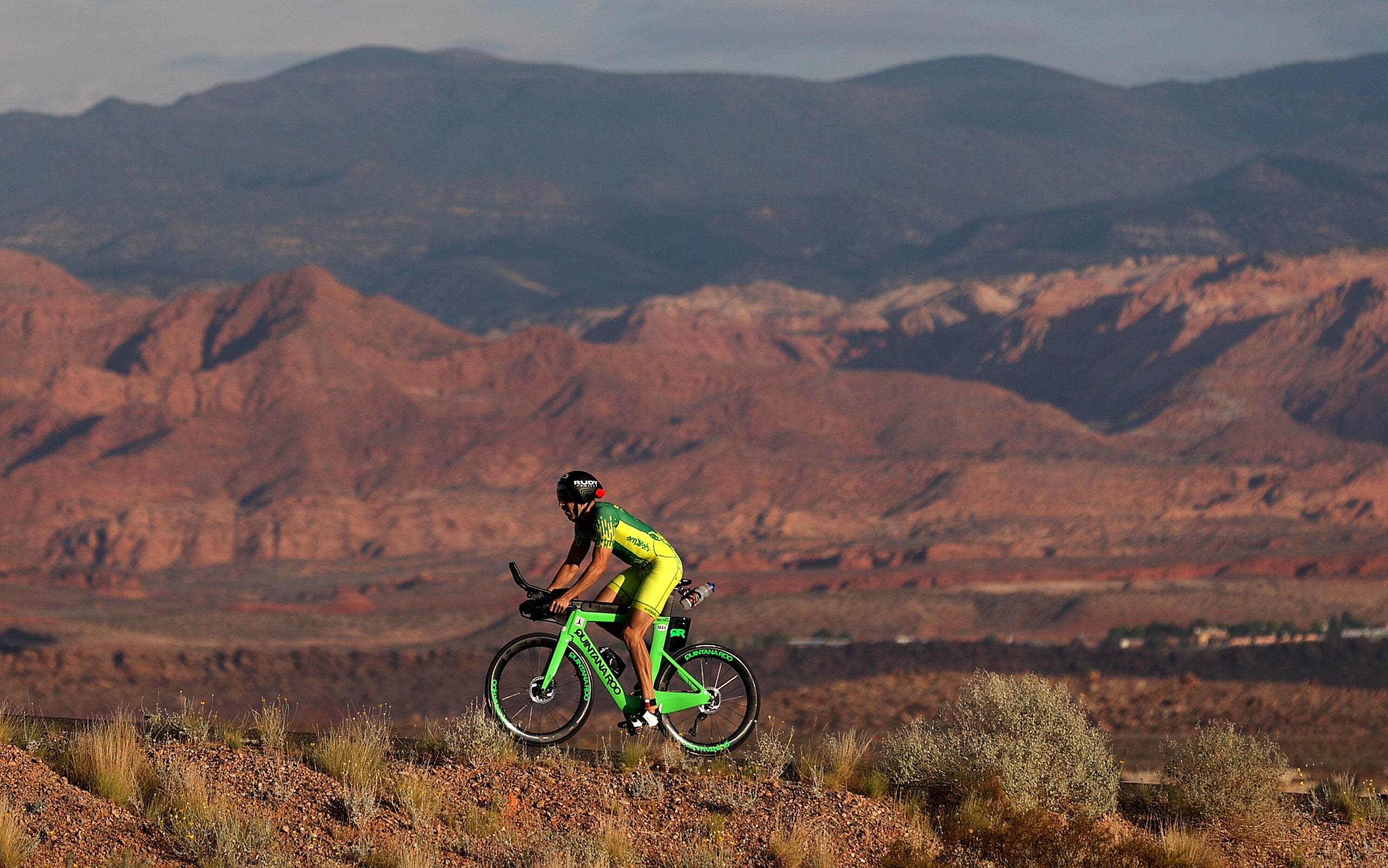
Which 70.3 race should I do?
Deciding on which race to do—especially if it’s your first half-iron triathlon—is no small decision. Don’t be afraid to take the time to do the necessary research. You can look up the best or easiest Ironman 70.3 courses for beginners, but that doesn’t always mean that’s the best or easiest Ironman for you. Some steps to help you decide which Ironman triathlon is the best for you:
- Ask other triathletes, especially those with experience racing at the half-iron distance, which race (or races) they’d recommend for a first-timer.
- Think about the conditions for your training and racing. Choosing a race course is not just about the race itself, but how you’re able to prepare. Are you someone who thrives in the heat and humidity? If not, consider signing up for a race that takes place in spring, to avoid the heat in training and on race day. Are you able to train for a hilly race course, or are all your local bike routes at home pancake-flat?
- Consider what is most important to you on race day: Do you want to do your hometown course, or travel to a destination race to make a vacation out of it? Would you like your friends and family there to cheer you on, or would you rather fly solo? These factors may seem trivial, but they can be really important to your race-day experience.
Among the most popular Ironmans for beginners in the U.S. are Ironman 70.3 Oceanside in April, Rev3 Williamsburg in July, Ironman 70.3 Atlantic City in September, and Clash Daytona in December. It might come as no surprise to see that most of these courses are fairly flat, which is certainly what attracts newcomers. More seasoned athletes like these courses too, because it allows them to chase a personal record (PR).
RELATED: Data Dive: The Fastest and Slowest Ironman and 70.3 Courses
However, “flat and fast” needn’t be your only consideration for choosing the best 70.3 race for you. Some people pick races for the scenery or destination appeal. Ironman 70.3 St. George is a great example of this—many choose this extremely hilly race because of the breathtaking scenery and proximity to tourist destinations like Las Vegas, Zion National Park, and the Grand Canyon. (In 2022, St. George will host the Ironman world championship races for both the full and half-Iron distances.)
Section divider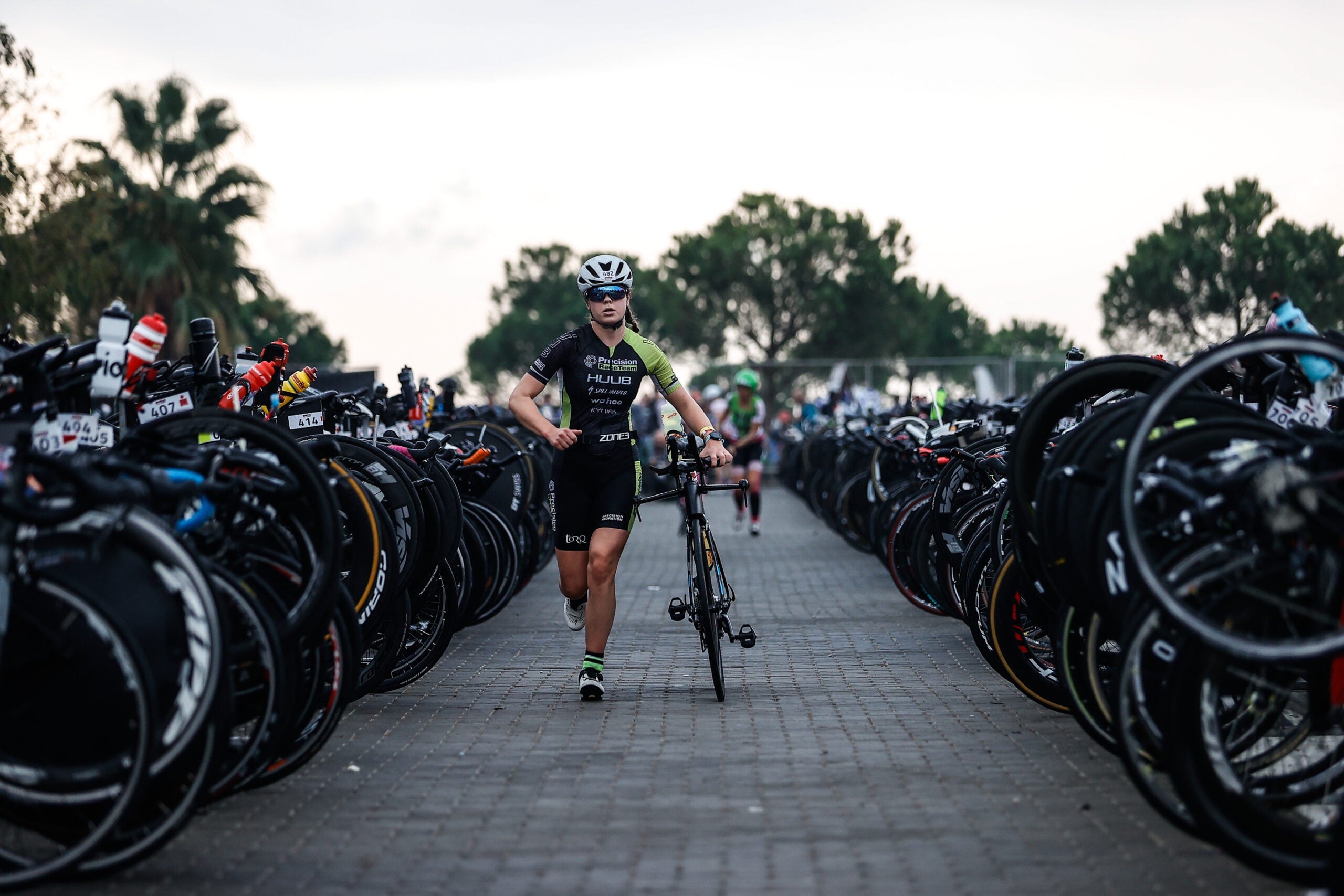
What gear do I need for a 70.3?
To get through a long race like a half-iron, you’re going to need a lot of gear. But that doesn’t mean you need to go out and buy everything right now. In fact, we’d recommend you start with the basics, then build out your gear arsenal as you become more familiar with the sport and what you need (and don’t need). We like to break down our gear list for a half Ironman into three categories: basic, intermediate, and advanced. Click on each category below for Triathlete’s handpicked gear roundups and buyer’s guides for our editors’ best recommendations:
Basic gear list for 70.3 triathlon:
Wetsuit (best of men’s and women’s)
You’ll need a wetsuit not only for warmth, but for increased buoyancy, which leads to speed.
Swim cap
A swim cap will keep your hair from flying everywhere while you swim, but it’ll also keep you warm, and for 99% of races, you’ll need to wear one on race day.
Triathlon swimming goggles typically have more visibility and protection for open-water swimming.
Tri-specific clothing will have padded shorts and material that you can wear the entire race without changing, if preferred.
While you don’t need a tri-specific bike, at the 70.3 distance a tri bike will be faster, more comfortable and recruit muscles that won’t interfere with your run.
All triathlon events require a helmet on the bike—more expensive helmets will be lighter, more ventilated and/or more aerodynamic.
While not required, sunglasses will let you see better and protect your eyes on the bike. A good pair will be ventilated enough to let you wear them on the run as well.
In 70.3 racing, some people prefer lightweight run shoes, while others prefer more substantial trainers. Either way, you need shoes that will withstand the rigors of half-iron training miles.
Race belt
A race belt will help you on race day by keeping your number on your body at all times from the bike to the run (depending on the rules) without wasting time pinning it to your clothing.
Anti-chafe lube/cream
When racing a half-iron triathlon, anti-chafe lube is essential. Use it in places where you contact the saddle, where your body has natural creases, or where friction is possible.
Training for and racing a 70.3 requires lots of hydration. Be sure to get a hydration storage system that lets you take more than you think you might need.
Intermediate gear list for 70.3 triathlon:
As above, plus:
Cycling-specific shoes and tri-specific shoes will attach to your specialty pedals and allow better power transfer and comfort. Tri-specific shoes will have features like quick on-and-off, drainage, and more.
A transition bag will help you organize all of the gear listed here while you’re both training and racing. Better organization means less chance of forgetting something when it matters.
A tri-specific saddle will be shaped in a way that best fits a triathlete’s position on a bike with aerobars.
Unless you live in a place with year-round good weather, an indoor bike trainer is an essential way to get in quality workouts when the weather is bad or the conditions are unsafe for riding outside.
Today’s smartwatches will not only track time and distance, but also help prescribe workouts, give biofeedback, track sleep, connect to your bike, and give pool and open-water swimming data.
These speciality handlebars place the rider in a more aerodynamic and (ideally) more comfortable position for long-distance training and racing.
Typically located between the aerobars, inside the frame, or behind the saddle, a bike hydration system will allow you to carry more fluid in a way that’s easy to reach and won’t affect bike handling.
Advanced gear list for 70.3 triathlon:
An aero helmet will simply reduce the drag as you race on your bike—assuming you can hold the proper aero position for the great majority of your race.
These aerodynamic, carbon wheels will not only allow you to ride faster, but can also increase comfort—depending on the rim depth and hub/spoke construction.
Cycling or running power meter
During training, a cycling or running power meter will help you get the most objective training data—regardless of conditions or terrain. While racing, they can help you with pacing and properly doling out your effort.
Need even more help on where to prioritize your spending? Check out Triathlete’s comprehensive, illustrated guide to buying tri gear.
Section dividerWhat to eat while training for a 70.3
Many half-iron training plans talk about how much you’ll need to train, but they don’t typically talk about how much you’ll need to eat. (Spoiler alert: It’s more than you think!) If you’re increasing your activity levels above what you’re used to, you’re going to need more fuel in the tank. But that doesn’t mean you should go and eat all the food in the fridge – instead, you want to take a thoughtful approach to fueling like an athlete.
RELATED: Triathlete’s Complete Guide to Fueling and Nutrition
The half-Ironman meal plan should include a good balance of protein, carbs, and healthy fat to stay full and well-fueled during workouts and beyond. That means you should fuel throughout the day with lean proteins, good fats, a wide range of colorful fruits and veggies, and complex carbs (e.g., potatoes, rice, whole grains) during meals and snacks. Hydration around the clock—not just during workouts—is absolutely essential as well. Be sure to sip on water and/or an electrolyte beverage throughout the day.
RELATED: Practical Guidelines for Fueling and Nutrition
Fueling for recovery
Along with sleep, nutrition is one of the most important pieces of the recovery puzzle when training for a half Ironman. Many nutritionists agree the most important meal is the one you eat after longer, harder training sessions, as it sets the stage for the next workout. Exercise physiologist Dr. Stacy Sims recommends men and women take in 20-30g of protein in the 30-45 minutes immediately following a workout; women should also take in 0.75g of carbohydrates per kilogram of body weight immediately following prolonged sessions in order to maximize muscle glycogen restoration and men 1-1.2 g/kg body weight. Eating protein and carbohydrate within the “recovery window,” when your body is most receptive to fuel, helps your body to repair the muscles and grow back stronger. It can also mitigate the effects of stress hormones, which are elevated during exercise. Miss that recovery window and you can often pay the price later, finding yourself reaching for quick sugar fixes and/or less healthy options. Some examples of post-workout recovery meals and snacks for triathletes:
- A smoothie
- Fruit and yogurt
- Chocolate milk
- Toast with peanut butter
- Scrambled eggs
- A sandwich with turkey and/or hummus
RELATED: The Proper Recovery Fuel for Every Type of Workout
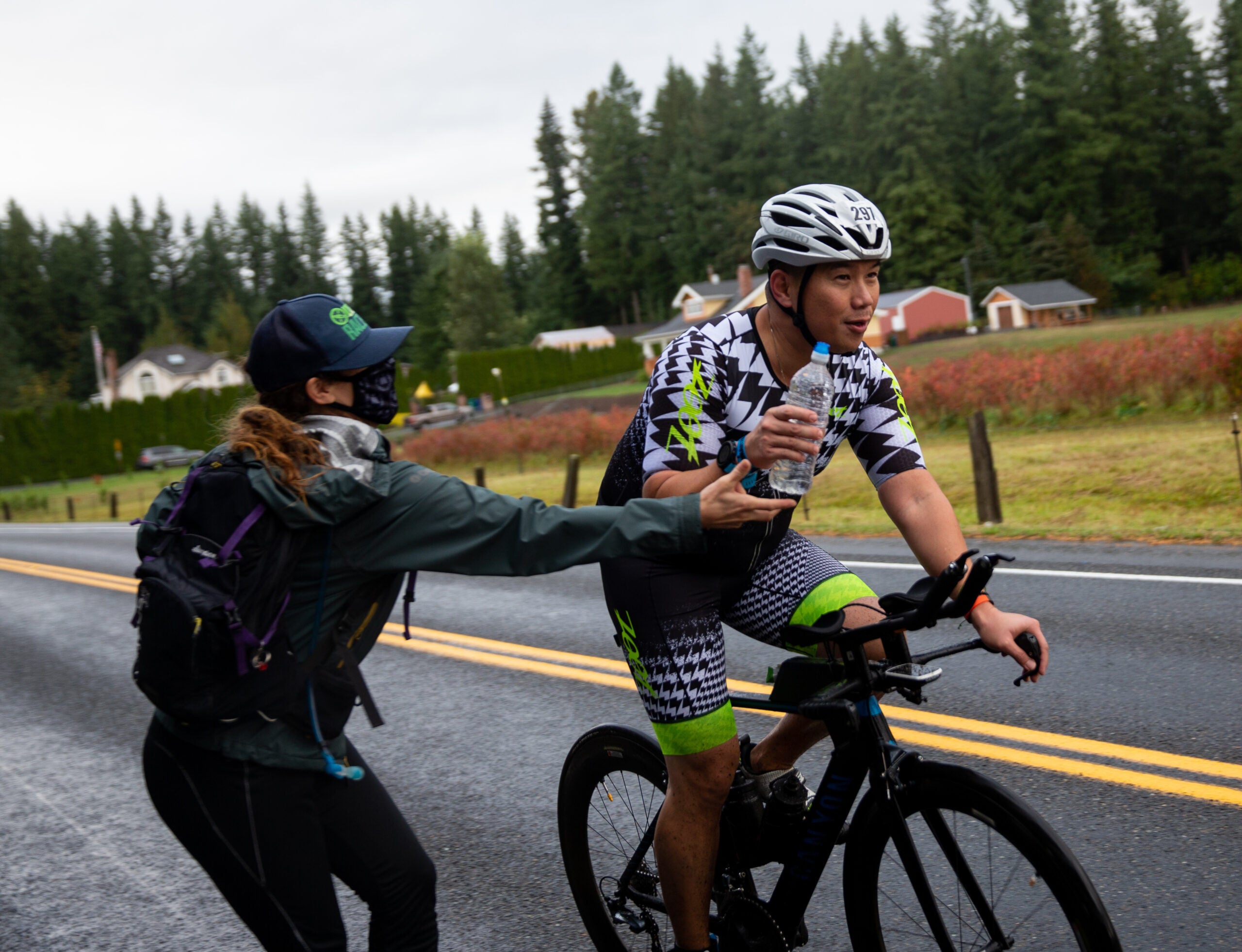
What do you eat during a half-Iron race?
There’s a reason they call nutrition the fourth discipline of triathlon—if you don’t fuel well during your race, it’s going to be really hard to swim, bike or run. Your engine runs off what you eat and drink, so it’s important to establish a nutrition plan in training that you can execute well on race day. Unlike sprint- and Olympic-distance triathlons, which can mostly be completed on the energy stored in the muscles and liver, a half Ironman will require you to top off your glycogen stores throughout the race by eating at strategic points throughout the event.
What does a typical 70.3 nutrition plan look like? It varies from athlete to athlete based on personal preference, but sports dietitian Susan Kitchen lays out the core tents in her Half Ironman (70.3) Nutrition Plan:
- Consume 60-90+g carb/hr (240-360 calories) from multiple carb sources such as glucose, fructose, and maltodextrin mixtures.
- Take in 500-700+ mg of sodium per hour to replace electrolytes lost in sweat.
- Drink 4-8 ounces of fluid every 15 minutes (increase this for hot or humid races).
- Test a variety of sports drinks, energy gels, sports chews, and low-fat and fiber sports bars in training to help you find the best product for you. The best fuel for racing a half Ironman is the one that is well-tolerated by your body and does not cause stomach upset while racing.
- Fuel and hydrate early and often. Waiting too long to fuel and hydrate increases the chance of dehydration which increases gastrointestinal problems (cramping, vomiting, diarrhea).
Some additional resources to help you establish your nutrition and hydration strategy for your half Ironman race:
- How to Choose the Best Sports Drink for Triathlon
- How Much Salt Do You Need While Training and Racing?
- The Expert-Curated, Triathlete-Approved Race Week Menu
- Gain (Don’t Lose) Ground At Your Next Aid Station
You can become a 70.3 finisher (yes, you!)
Will you become a half-iron finisher this year? We’re cheering you on! Training for a half Ironman is a great way to challenge yourself, make new friends, and explore the world of swim, bike, and run. Whether you choose to race a small local half-iron event or travel to an exotic destination for an Ironman 70.3, the feeling of crossing the finish line will make all your hard work worth it. As they say: “Swim 1.2 miles, bike 56 miles, run 13.1 miles—and brag for the rest of your life.” When you’re ready to brag, be sure to tag us in your finisher’s medal selfies—we can’t wait to celebrate with you!